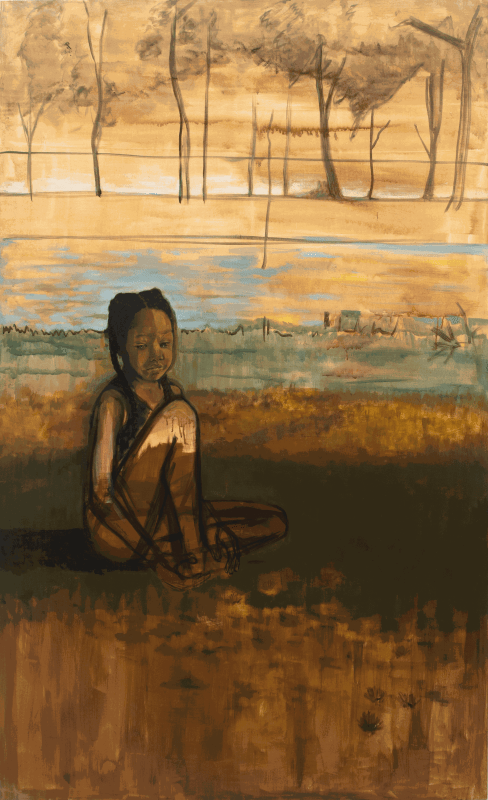Hannah Uzor (b.Lusaka, Zambia) makes work that is rooted her interest and research into both African and diasporic cultural histories and these are recalled and transmitted in personal and public memory. Her research-lead practice draws on her own family history as well as histories from the diaspora to make paintings and works on paper that are poetic and richly allusive.
Uzor’s recent body of work, shown at Niru Ratnam, speaks of the act of remembering, with particular reference to non-western diaspora communities. Today’s common methods of tracing family histories, such as archival records or web searches around ancestry are tools that are not so easily available to people of the various diasporas in the west. Archives are difficult to access, forgotten in moves or perhaps even destroyed in conflicts. Internet genealogical sites depend on searching records found in the west. In place of these many in the diaspora are reliant on word of mouth stories from family, objects brought from the country of origin, and everyday forms of memory such as recipes or specific cultural traditions. Individually these fragments are pieced together to produce unstable histories which are both present but often hover just out of tangible reach.
In these new works by Uzor the figure of the grandmother is a key one. Post-war migration into Britain produced a ‘first generation’ who are largely associated with arrivals in the 1960s and 1970s, whose children were born here and termed the ‘second generation’. Whilst useful in a general way, these terms imply that the moment of migration was some sort of ground zero, effectively erasing the presence of those who came before the ‘first’ generation. The grandmother, often prevented by societal structures of the time from entering the formal workplace, was often the repository and re-teller of memories, stories and also who re-enacted everyday domestic practices (such as recipes) for subsequent generations. And yet they too could be unreliable narrators and ones whose voices now are disappearing.
These paintings are not simply an exercise in remembering or nostalgia for a pre-migration generation. Uzor’s figures, whether grandmothers, children or others, are ambiguous rather than celebratory, caught in solitary moments of contemplation. They emerge onto the surface of the painting almost swathed in the backgrounds around them, and it is not clear if they are emerging from the past or sinking back into it. They are in a moment between a partly-returned past and an always tenuous future.
In his essay ‘Cultural Identity and Diaspora’ the theorist Stuart Hall wrote: “Cultural identities come from somewhere, have histories. But, like everything which is historical, they undergo constant transformation…Far from being grounded in a mere 'recovery' of the past, which is waiting to be found, and which, when found, will secure our sense of ourselves into eternity, identities are the names we give to the different ways we are positioned by, and position ourselves within, the narratives of the past.” The past continues to speak to the figures in Uzor’s paintings, but these paintings are more about how those in the diaspora negotiate memories, stories and everyday traditions in order to gain a sense of the past that might inform the present or point ways forward into possible futures.
